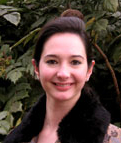HETL Note: Michelle O. Crosby-Nagy offers an insightful response to Dr. John M. Carfora’s article entitled “Navigating Between Teaching, Learning and Inquiry“, posted on March 30, 2011. Specifically, Ms. Crosby-Nagy believes that “inquiry-based teaching generates curious individuals” and it is this scientific curiosity that is the foundation of scholarly work for both teachers and students. You may submit your own article on the topic or you may submit a “letter to the editor” of less than 500 words (see the Submissions page on this portal for submission requirements).
 Author’s Bio: Michelle O. Crosby-Nagy is a Ph.D. student in sociology at the Corvinus University of Budapest, Hungary and a science, technology and innovation policy analyst. Ms. Crosby-Nagy has worked as a research associate for the Board of Higher Education and Workforce at the National Academy of Sciences. She is a former National Academies Mirzayan Policy Fellow and former intern at the White House Office of Science and Technology Policy. She is co-founder and former executive director of two non-profit organizations dealing with issues such as the value of skilled foreign nationals in the US, industrial organization and science for statecraft.
Author’s Bio: Michelle O. Crosby-Nagy is a Ph.D. student in sociology at the Corvinus University of Budapest, Hungary and a science, technology and innovation policy analyst. Ms. Crosby-Nagy has worked as a research associate for the Board of Higher Education and Workforce at the National Academy of Sciences. She is a former National Academies Mirzayan Policy Fellow and former intern at the White House Office of Science and Technology Policy. She is co-founder and former executive director of two non-profit organizations dealing with issues such as the value of skilled foreign nationals in the US, industrial organization and science for statecraft.
Patrick Blessinger and Krassie Petrova
~~~~~~~~~~~~~~~~~~~~~~~~~~
To the Editor:
With delight, I devoured Dr. Carfora’s article about the balance between research, learning and inquiry— or rather, the balance between “the researcher”, “the learner” and “inquiry” since I too recently experienced an epiphany in my new beginnings as a researcher/educator. As a doctoral student, for the very first time, I have been entrusted with the elementary level quantitative education of my institution’s undergraduate sociology students. Ever since accepting the job, I have wrestled with questions of process and profit: how does one design inquiry-based calculus 101; how can I proceed with both delicacy and rigor; what is in it for me? I thought I would start with evaluating what I know and how I came to know it by finding my old textbooks. Among all the damp and lonely books I found in my parents’ basement from their dissertations, I unexpectedly discovered the teaching books from my father’s chemistry education Ph.D.
The books ask the teacher to examine his/her motivation for teaching the course. They go on to emphasize how to write objectives, the levels of behavior a learner can engage in and encourages the teacher to strive for the highest level of learning behavior; how to contract with a student and have specific exercises for the teacher in order to engage in constant review and improvement of teaching skills. Like Dr. Carfora’s postcard in a crystal bowl, these have helped to define what it means to teach an inquiry-based course, with the added layer of complexity of so-called “science” courses.
I would be remiss if I did not mention the origins of my desire to design inquiry-based courses as opposed to 80 minutes of pure lecture, since this desire is in itself the product of having mentors who so carefully and intentionally guided me with inquiry. One being a professor from Bowling Green State University, who taught my honors introduction to critical thinking course and who gave me my first teaching opportunity and another a very generous soul who waded me through the dark water of scholarly publication with the phrase “writing is about answering interesting questions, which naturally flow from one another.”
Bottom line, inquiry-based teaching generates curious individuals, and inquiry-based teaching requires work—I will be spending the next 8 weeks designing the programs for my courses, not the two weeks I was told I would only need.
Michelle O. Crosby-Nagy
Copyright © [2011] Michelle O. Crosby-Nagy
Disclaimer
Opinions expressed in this article are those of the author, and as such do not necessarily represent the position(s) of other professionals or any institutions.
